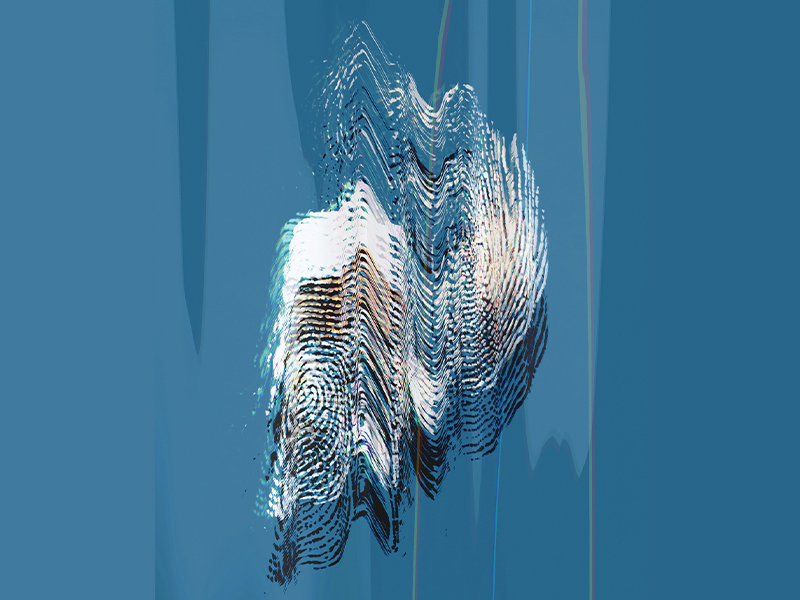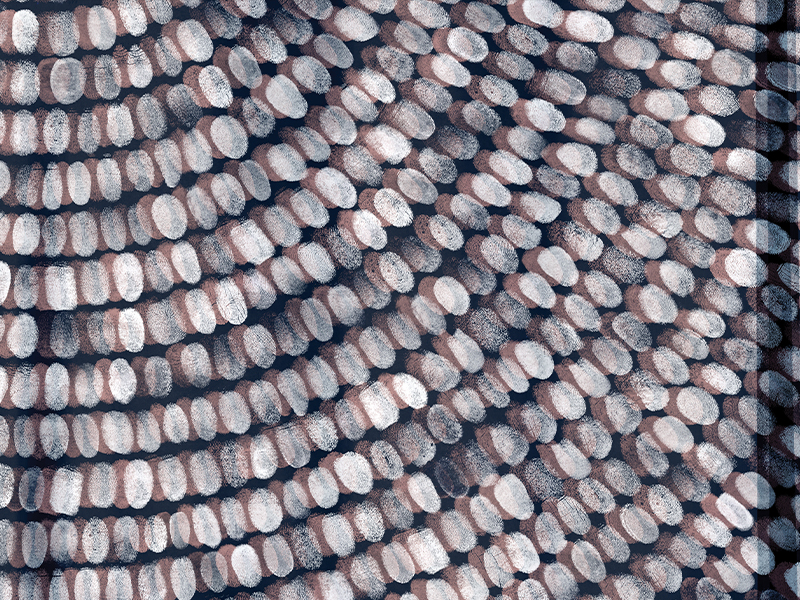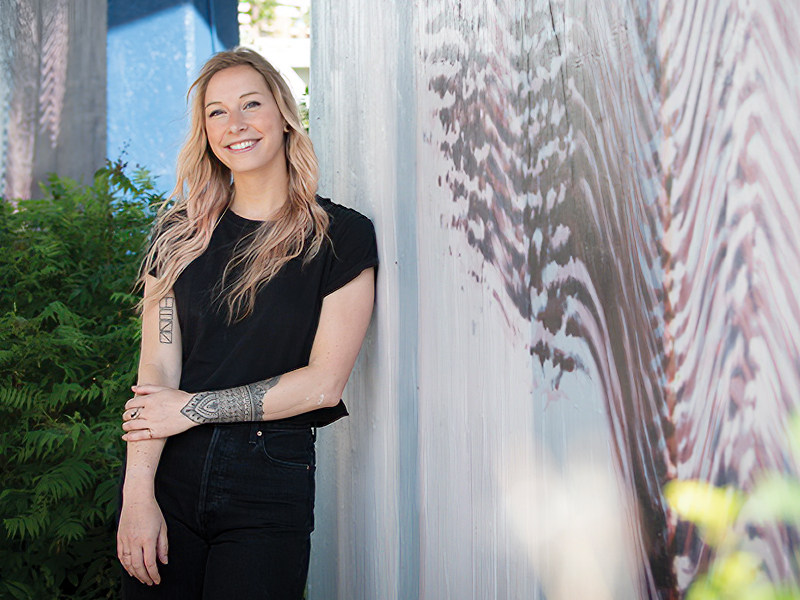Create Calgary: Artist Cassie Suche
Local Calgary artist offers insight into her creative process and shares some behind-the-scenes facts about her latest project, Touch Traces.
This article was originally published in Create Calgary, a new arts magazine launched by Calgary Arts Development in 2022 to celebrate the work of artists who call Mohkinsstsis/Calgary home. You can pick up a free copy at public libraries, community recreation centres and other places where you find your favourite magazines. You can also read the digital version online here
About Cassie Suche
“I grew up in Calgary and always loved making stuff, so I always knew I wanted a creative career. There’s really nothing else I can imagine myself doing.
“It’s hard sometimes to put words on the process and the work I make because is is so abstract, but I would say I make process-focused abstract art. I like to experiment with whatever medium I’m using and use materials in ways that aren’t intended. I’m also a modular artist, so I use a lot of repeating elements in my art, often lines or dots and circles.
“I like to pick a material or process, start experimenting with it, combine it with other things and see what happens. I don’t go in with a plan; I want to discover stuff and find something that captures me.”

The Background
“From the beginning, I was thinking about the material, and I have seen past projects very successfully use printed vinyl. For pragmatic reasons, it makes sense as it has the durability to last over three years. But, I was really excited about the idea of printed vinyl because digital printers as a medium offer a unique opportunity to create work that highlights automated techniques. I settled on this digital technique that involved playing with images on a flatbed scanner. It produces this flowy watery imagery reminiscent of the river, which connects to the [RiverWalk] site.
“I was also thinking about how I wanted to bring the community in to contribute something because one thing that makes public art successful is a really authentic collaboration between the artist and the community.
“It wasn’t until I tried prints of my fingerprint that the aesthetic really grabbed me. I talk a lot about aesthetics, but it’s not just about beauty. I’m interested in where a viewer’s eye lands and where an image captures attention.
“Fingerprints come with all these really interesting connotations. They are an intimate reference to touch that symbolizes one of the ways that we connect with others and the way that we connect with our surroundings. They also have this beautiful duality of being universal, but also really unique. And, of course, over the last couple of years, we’ve had this heightened anxiety over what and who we touch. So, I felt like this was an interesting opportunity to reframe that notion.”

The Process
“I took all the fingerprints, documented them and cleaned them up. Then I would select a print, scale it up to about the size of a palm and print it on a sheet of paper. After I used the flatbed scanner to document that print, but, as it scanned, I pulled, lifted and twisted the page. So, the resulting image was this elongated rendition of a fingerprint.
“The scanner isn’t intended to be used that way, so some had vertical lines and skips and bands of colour, but I selectively kept many of those elements and layered them to show all aspects of the work. I did those thousands of times; some I inverted or recoloured, but I tried hard to honour the process.
“I have such a visceral connection to abstract art. I find it has a lot of really interesting potential, and yet it’s less visible in public art because the messaging is often so indirect. So, I was really excited to find a way to capture public art withhin abstraction and expose everybody to it.
“Public art as a medium has potential like no other. Good public art saturates a community in a way that literally no other medium can, and the fluidity and flexibility of that medium can interrupt society in a good way and be incredibly powerful.”
The Budget
CMLC gave $94,500 to Suche for the Touch Traces project. Of that amount, Suche takes 10-15 per cent as her fee and uses the remainder on things such as supplies, permits, installation and more.
This is what a project budget can look like:
• Insurance (1-3%)
• Engagement Supplies (1-3%)
• Consultation (2-10%)
• Fabrication (20-50%)
• Installation (20-50%)
• Permits (<1%)
• Equipment Rental (5-10%)
• Signage and Documentation (1-2%)
• Artist/Project Management Fee (10-20%)
• Contingency (10-15%)
Touch Traces is part of the Art in the Public Realm program. Launched in 2012 by Calgary Municipal Land Corporation (CMLC), the program aims to “build a legacy of public art in East Village through permanent and temporary, curated art installations of local, national and international significance.” The program demonstrates CMLC’s commitment to arts and culture and contributes to the area’s distinctive character and vibrancy.
Cassie Suche is a contemporary abstract artist working in Calgary whose work has been commended internationally, including across North America and Europe. Two of her well-known public art installations include GROW, an experimental work installed onto a grass field in northern Calgary, and Rise and Reflect, an abstract-sculpture expression of the dynamic nature of the International Avenue area. Cassie Suche is represented by Paul Kuhn Gallery. Visit her website at cassiesuche.com.
